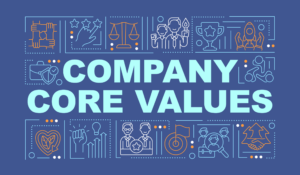In March 2017, Fast Company posted an article titled “The War for Talent Is Over, and Everyone Lost.” Sure, it is a bleak headline, but the truth is, organizations have always depended on having the right team of people with the right talents in order to succeed.
In some ways, it may be harder to find those superstars today, because many of them choose to go into business for themselves, and some of them are willing to relocate anywhere on the globe for the right opportunity.
At the same time, however, companies are no longer as restricted by sheer geography as they used to be. Many top-performing companies put together teams that are widely dispersed. Nonetheless, companies that are not worried about finding and retaining outstanding talent should not worry about anything else either because, without great talent, they will eventually fail. Here are some thoughts on hiring great talent and keeping them with the help of strong employee engagement strategies.
Why Good Employees Leave
In a simplified, theoretical world of business, employees only leave because someone else makes them a better offer, in terms of compensation. Sometimes, however, the “better offer” has less to do with dollars and cents and more to do with passion and a dynamic, supportive work environment. Some of the main reasons why employees take other opportunities include:
- Bureaucracy and rules from bygone eras that make no sense
- Little discussion of career development
- Incompetent management
- Lack of engagement and passion for what they do every day
What do all these things have in common? They are all symptoms of a lack of employee engagement, whether it is the employee who is not engaged, or whether it is the employees surrounding them and interacting with them every day who are not engaged. Businesses without clear employee engagement strategies can count on losing in the competition for the best talent.
Hire Well and Offer Competitive Compensation
As a basis for great employee engagement, you have to start with the fundamentals. Hiring well in the first place is absolutely essential. Naturally, you want to fill open positions quickly, but hiring “just anyone” can easily end up being more expensive and disruptive than taking the time to find the person who has the right skills and who will have a positive contribution to make to your corporate culture.
At the least, be prepared to offer top talent compensation that is in line with industry norms. When you bring on new talent, have a new employee onboarding process that makes sense, is efficient, and lets the new person know he or she is valued and welcome. Using technology like employee apps to streamline and smooth the onboarding process can make an excellent first impression.
Let New Hires Know They Have a Bright Future with Your Organization
Whatever the industry, top talent has the luxury of being discerning with their opportunities. If your company does not specifically talk about a new person’s future with the company and leaves them wondering as to what their opportunities for advancement are, be aware that other companies may be attempting to entice them with their own great opportunities.
Discussing each and every new hire’s career path and goals is one of the most important employee engagement strategies you can have. The subsequent step is providing the mentoring and learning opportunities they need so they can reach them.

Choose Managers Carefully and Train Them Properly
Talk to ten people who recently quit their jobs and you will find that a startling number of them quit because they could not stand their direct manager. This is true whether a person is a line cook, a nurse, a teacher, or a mortgage broker. There will be the rare occasion when there is “nothing wrong” with either an employee or their manager, except that their personalities clash. But most of the time, poor management and poor management training are major factors.
Investing in your managers by choosing the right people for the job and by training, mentoring, and coaching them in their role not only keeps them engaged in their work, but also makes it likelier that their direct reports will be more engaged in their roles as well.
Maximize Employee Engagement Throughout the Workforce
Employee engagement strategies should not be limited to making sure your top talent sticks around. These strategies should include everyone in the organization because disengagement at one level or in one department has a way of rippling outward and affecting everyone. Therefore, when considering employee engagement strategies, commit to learning about employee engagement at every point on the organizational chart. Your top talent probably spends time interacting with a variety of colleagues in a variety of other roles, and when they are disengaged, they make it harder for your top talent to remain engaged in their own work.
Talent Does Not Overcome Disengagement
The employees who are most likely to quit, according to a study by Gallup, are the employees who are least engaged in their work. Perhaps what is most compelling about the results of the study is the fact that it holds true for top talent, average performers, and below-average performers. Highly talented employees who are not engaged in their work often have the highest turnover rates (and are often the most expensive to replace, too).
One tactic that has a place in many top companies’ employee engagement strategies is that of providing a custom employee engagement app. Think about it. The employee engagement app can serve both the company and its employees at every stage. Many new hire onboarding tasks can be taken care of by an app, and apps are unequaled for presenting training and advancement opportunities to the workforce.
The right employee engagement app lets a company push relevant information to the right employees at exactly the right time. It provides training modules, communication capabilities, and a great platform for accomplishing administrative tasks. Top companies use engagement apps to solicit and deliver feedback, helping ensure that no one feels left out of the loop and everyone is on the same metaphorical page when they arrive at work each day.
You may have access to a global talent pool, but that does not mean you can simply assemble a team and turn them loose. Communication, presentation of great opportunities, and great management all must be components of employee engagement strategies. Otherwise, top talent will walk. If you are interested in learning more about employee engagement apps and employee engagement strategies, hubEngage encourages you to sign up for our employee engagement insights newsletter.













